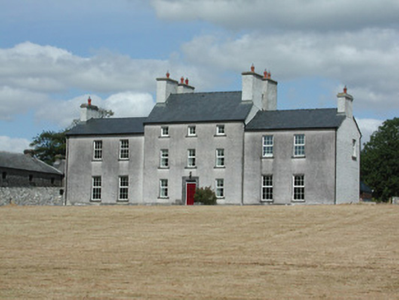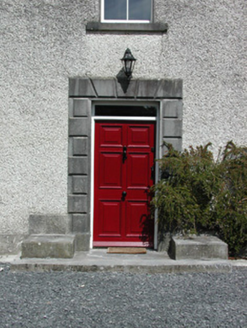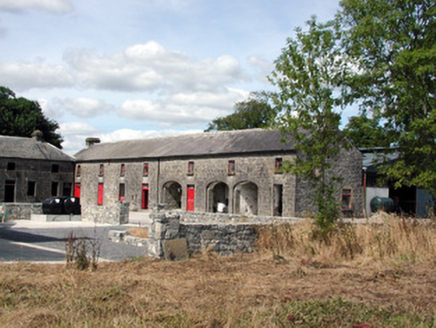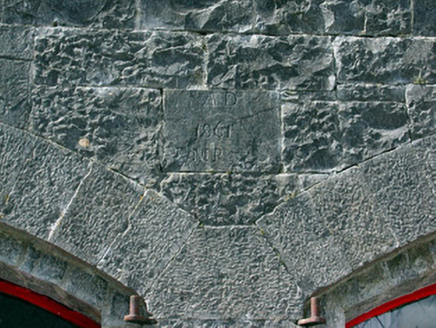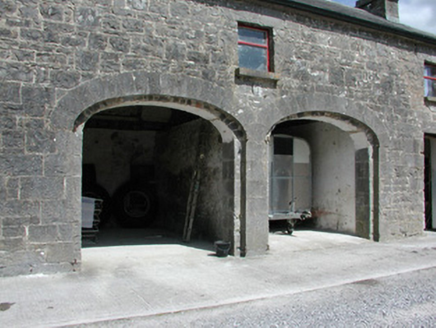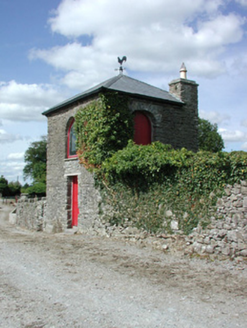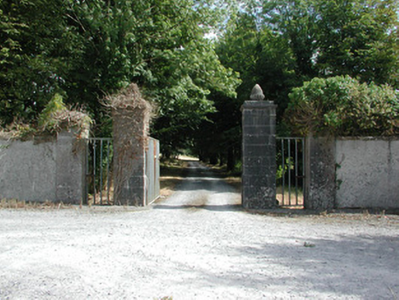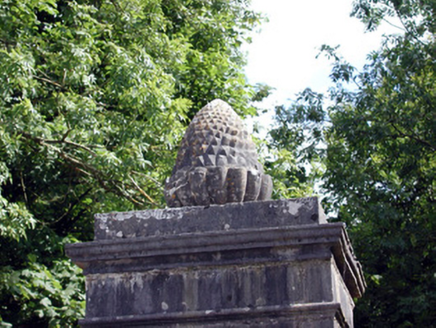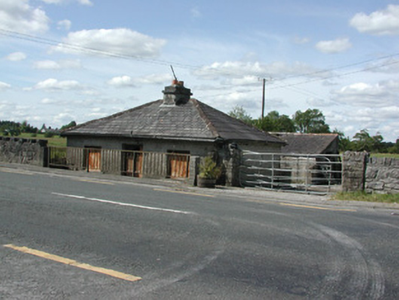Survey Data
Reg No
31934003
Rating
Regional
Categories of Special Interest
Architectural, Artistic, Historical, Technical
Original Use
Country house
In Use As
House
Date
1740 - 1760
Coordinates
170100, 271977
Date Recorded
11/08/2003
Date Updated
--/--/--
Description
Detached three-bay three-storey country house, built c.1750, with central block flanked by two-bay two-storey wings almost as high as main block. Single-storey extension to rear. M-profiled slate roof with rendered chimneystacks. Pebble-dashed walls. Square-headed window openings with replacement uPVC frames and stone sills. Tooled limestone door surround and replacement timber panelled door. L-plan outbuildings to rear yard built 1861. Hipped and pitched slate roofs with limestone chimneystacks. Cut limestone walls with '1861' date plaque to keystone over doorway. Segmental-headed carriage arch openings with tooled limestone surrounds. Square-headed window and door openings with tooled limestone surrounds. Walled garden to northeast of house with one wall removed. Two-stage corner tower to walled garden. Ashlar gate piers to main entrance with acorn finials flanked by sweeping walls and terminating in ashlar piers. Three-bay single-storey former gate lodge to roadside opposite entrance gate, no longer in use.
Appraisal
Dundermot House is a well-proportioned and symmetrical country building. Its situation on a slightly elevated site, with its front site sweeping down to a wide expanse of the River Suck, enhances the form of the house. The river at this point forms a border between counties Roscommon and Galway. The form and scale of this early to mid-eighteenth-century house are striking and are underlined by the absence of lavish external decoration or embellishment. The ancillary structures to the site add to the setting of the main house. The outbuildings to the rear yard dating to 1861 and the walled garden with its two-stage tower are both architecturally significant in their own right. The elegant entrance gates with the finely-carved acorn finials are an expression of wealth and allude to the grandeur of the house enclosed within.

